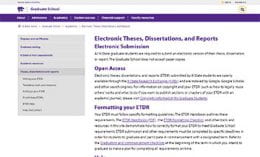Are you a master’s or doctoral student? If so, it is likely that you will be conducting research as part of your studies. At some point, you may be writing a thesis, report, or dissertation to record your work to share with the profession and the world. K-State has made available templates (in Microsoft Word and LaTeX) for students to use, in order to ensure that they include all required information in the proper formatting.
“Getting Started with ETDR Templates” is an online training on Zoom from 1 – 2:30 p.m., Monday, Oct. 25.
Continue reading “Oct. 25: Getting Started w/ ETDR Templates”
